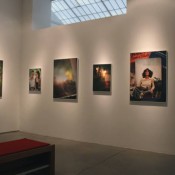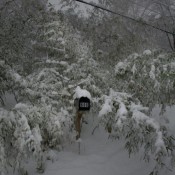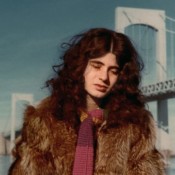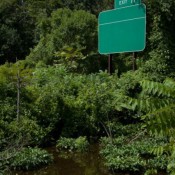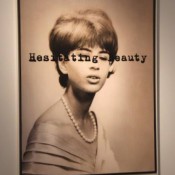HESITATING BEAUTY: PHOTOGRAPHS BY JOSHUA LUTZ
by Kylie Gilchrist
ClampArt Gallery
April 11, 2013 - May 23, 2013
At Clampart Gallery this April, Joshua Lutz presents Hesitating Beauty, a visceral experience of a family’s encounter with mental illness that dissolves the viewer’s vision of the real into fragmented and competing images. Through small tricks and discontinuities in framing, technique and temporality, Lutz’s images evoke a deep empathy for his mother’s experience while calling into question our own perceptual realities.
Hesitating Beauty is a concise visual statement presenting images from the artist’s eponymous monograph released by Schilt Publishing on the same occasion Schilt Publishing. Grainy family photos, portraits fuzzy with yearbook nostalgia, and digitally manipulated montages mix with the crisp focus of stock photography to evoke a surreal slippage between past and present, fact and fiction. Lutz destabilizes photographic reality and narrative order as he recounts his mother’s descent into paranoid schizophrenia. Hesitating Beauty is a fictionalized archive of photographic illusions: a staged photo of Lutz’s mother standing before San Francisco’s Whitestone Bridge hangs across from a black and white image of her hospitalization. A portrait of a young couple cheerful with the faded warmth of 70s color photography hangs nearby, projecting a hopeful image of the stable family dynamic dissolved by Lutz’ mother’s illness. The play between fact and fiction within these pseudo-archival documents is augmented by explicitly manipulated digital images, such as the montage of a woman in her front lawn, serially patterned in fisheye ovals like spider vision.
Eerie omens of something gone wrong intermix with ideal visions of social life throughout the show. A noose hides subtly behind green foliage, blending into the tree bark behind it, while a glossy image of a couple, generically polished with the quality of stock adverting, hangs adjacent. Such a juxtaposition undermines the viewer’s framework of normality so thoroughly that one begins to seek out signs for direction. Evoking his mother’s paranoid state, Lutz obliges us ¬– one image presents a mailbox in the snow, innocuous except for the number ‘666’. Another image displays a green highway sign, blank except for the marker ‘Exit 17’. Lutz expands the dissolution of personal narrative to a social and political context: a faded portrait of his mother, carefree on a motorcycle, overlays a pile of books in which the only legible title is The Coming Community by the French anarchist collective Tiqqun. Interspersing his mother’s fictionalized photographic archive with lush images of the rainforest, these oblique references effect an underlying critique of the biopolitical economies that shape our subjecthood, and even implicate such structural systems in his mother’s mental breakdown. Thus reminded that causality is the basis of political critique and our actions form the basic material of our stories, we are compelled to ask how we shape our narratives of the world. If Lutz can recuperate his mother’s experience, it is here – where we see our perceptions of reality and naturalized narratives break down and where the boundaries of our selves are forced to merge with other visions of experience, compelling us towards a greater empathy with what is otherwise unknown.
ClampArt Gallery, 247 W 29th St, New York, NY 10001, clampart.com.
All images courtesy ClampArt Gallery
share article
similar articles



